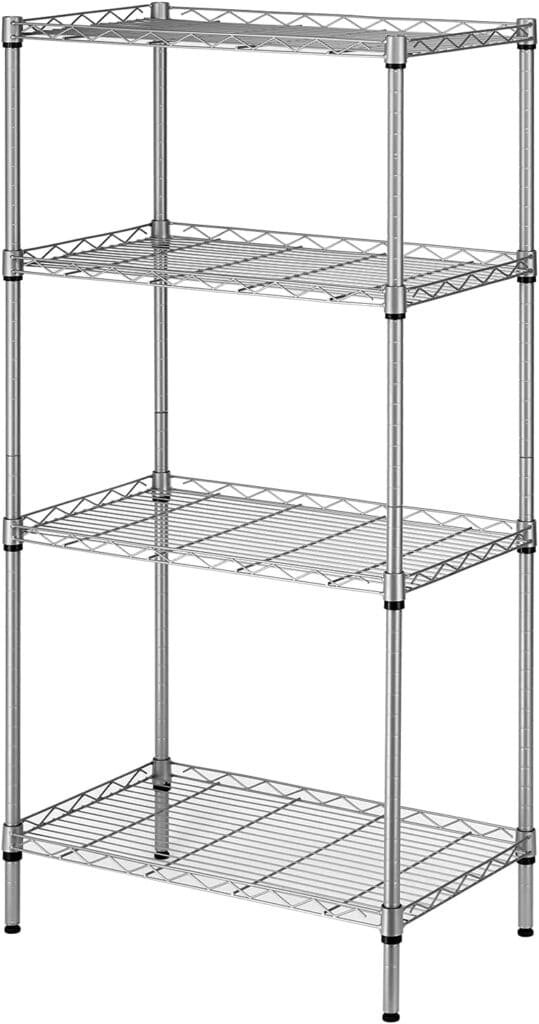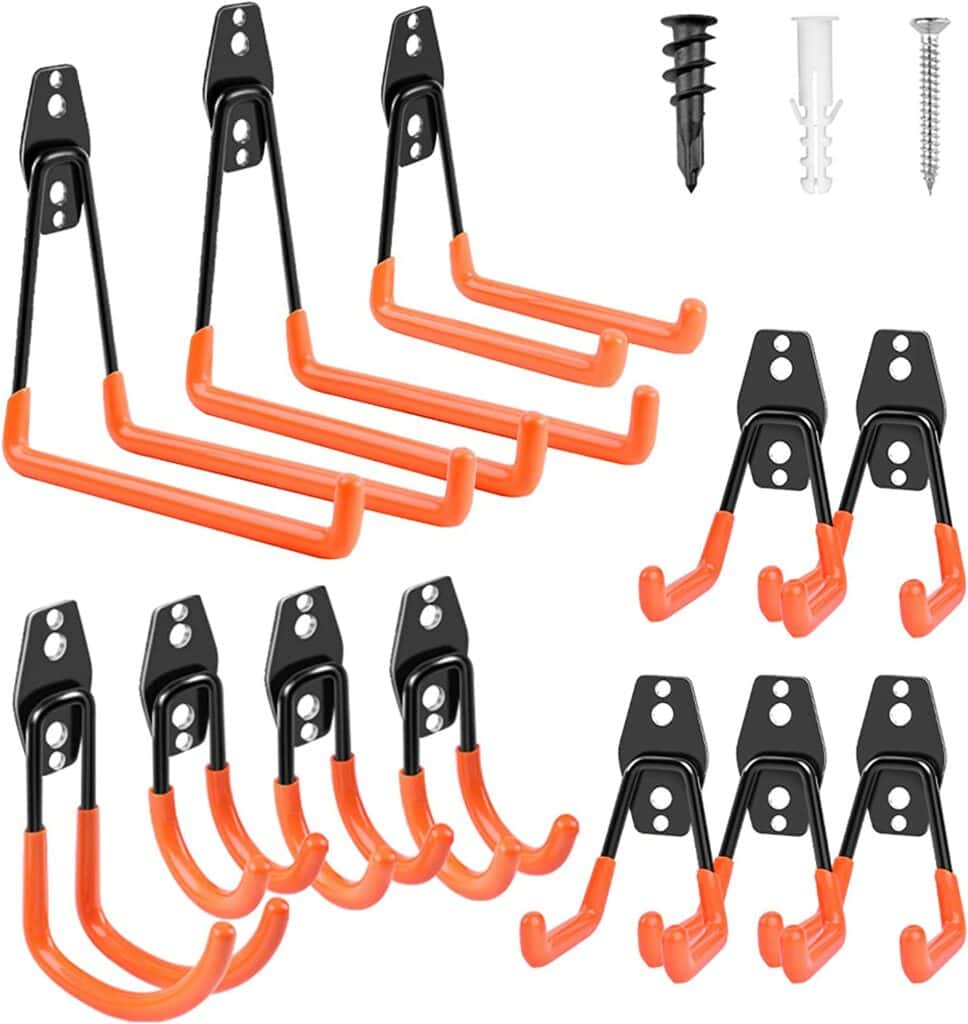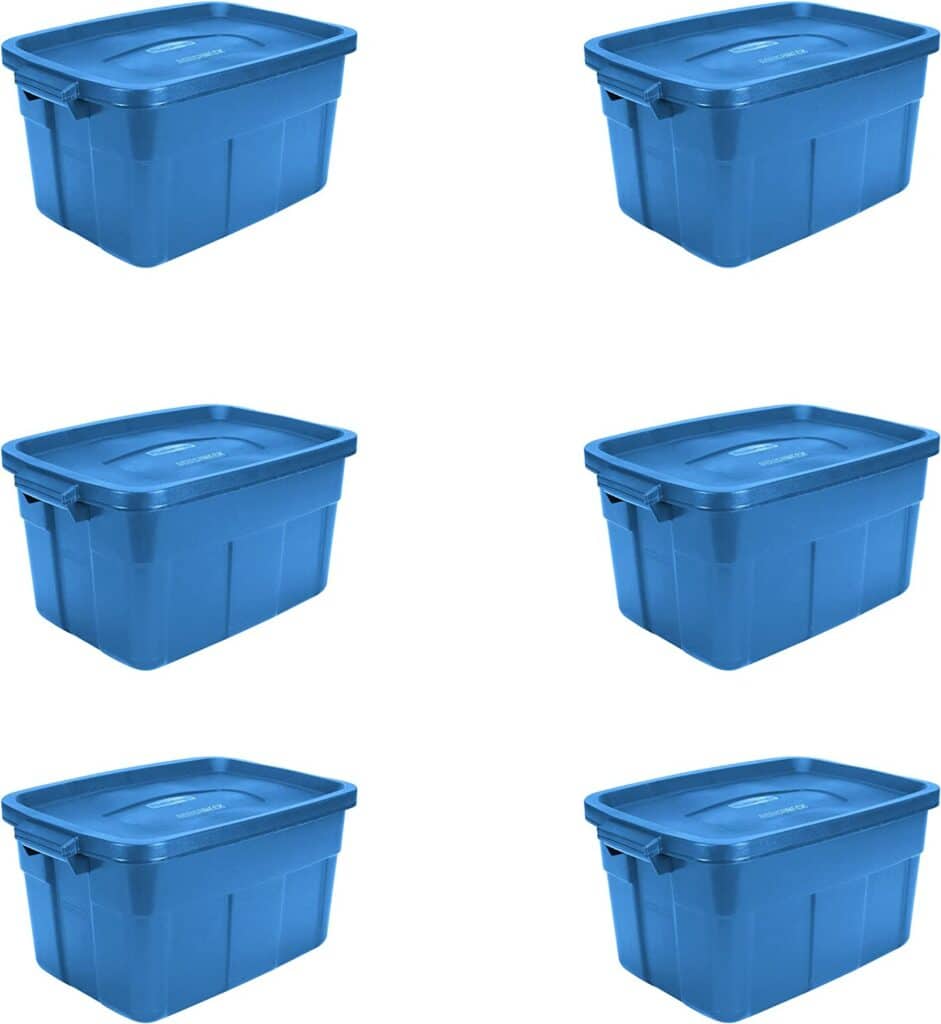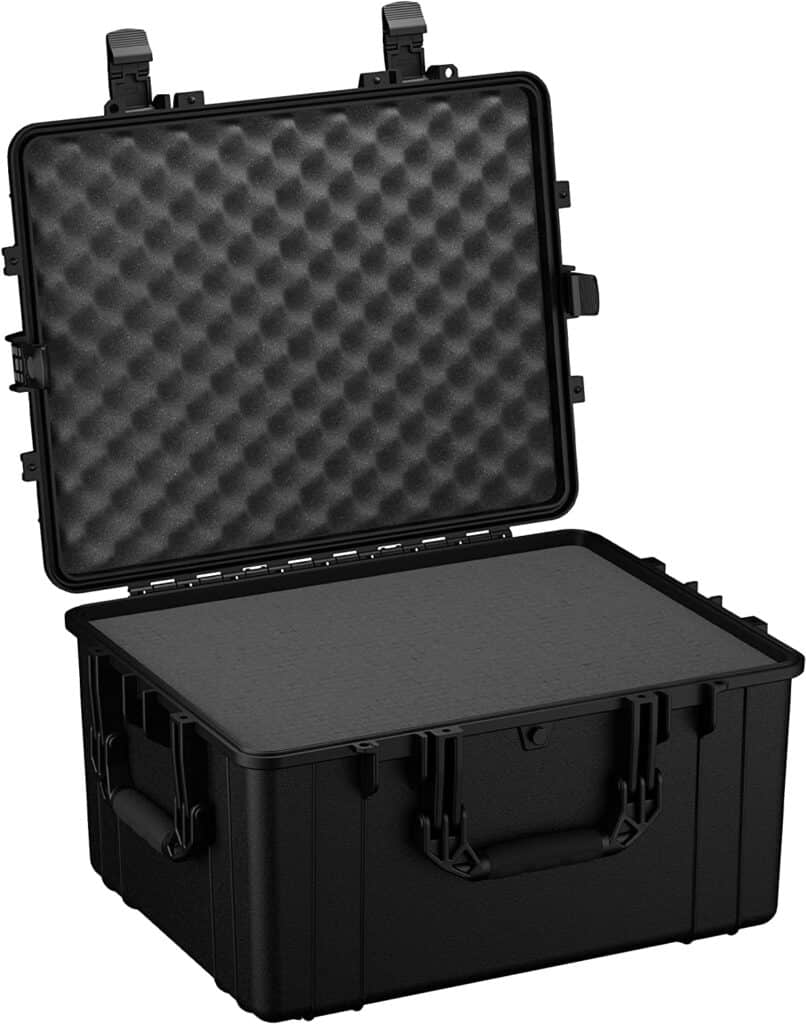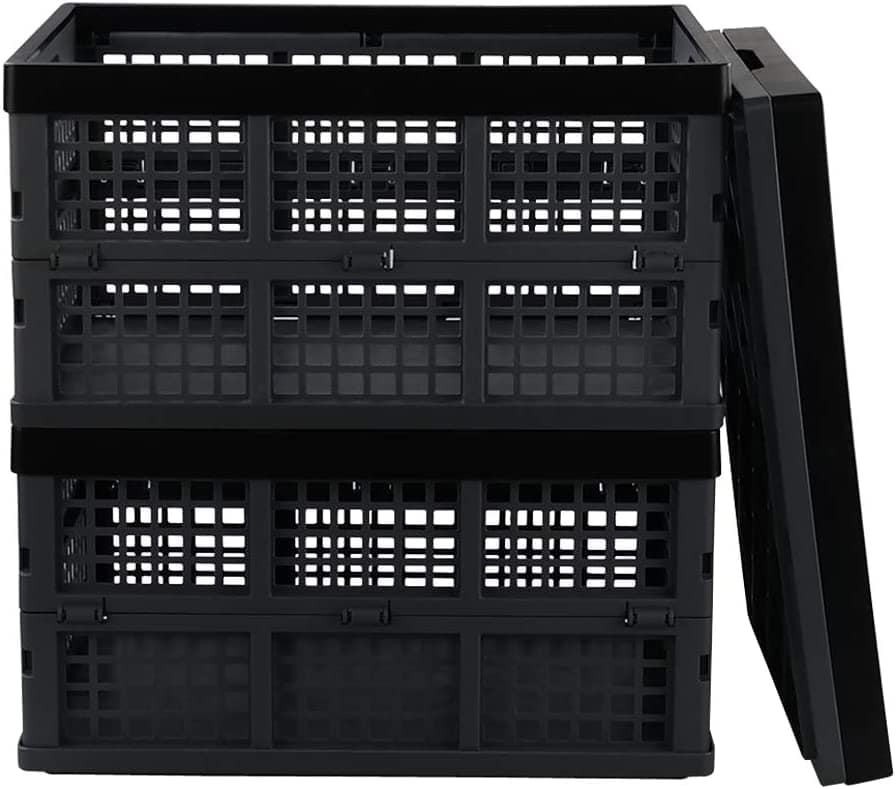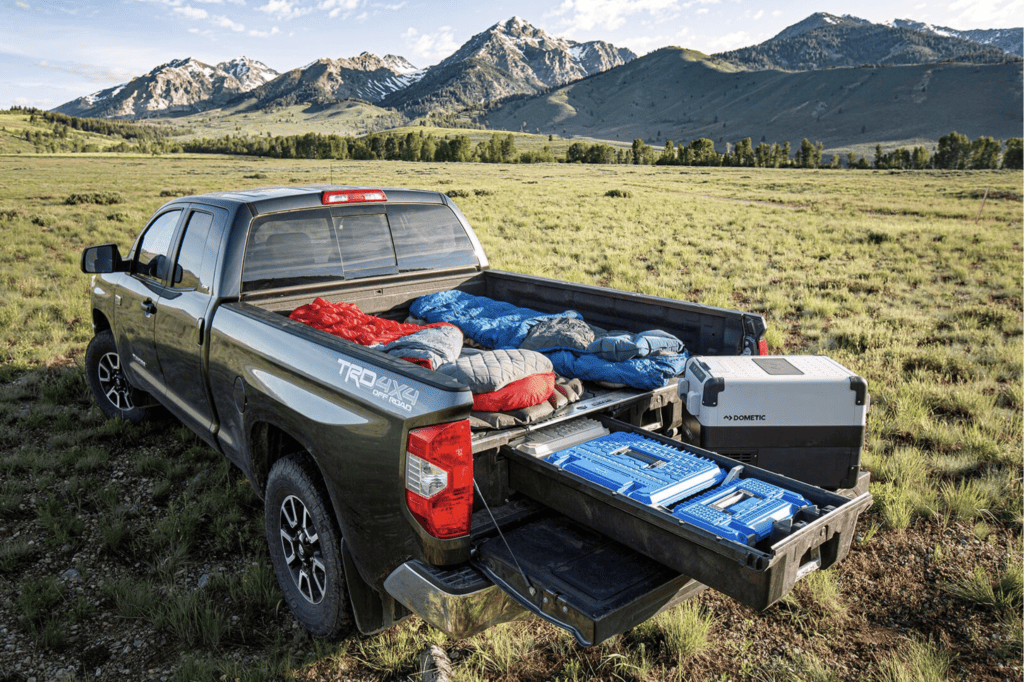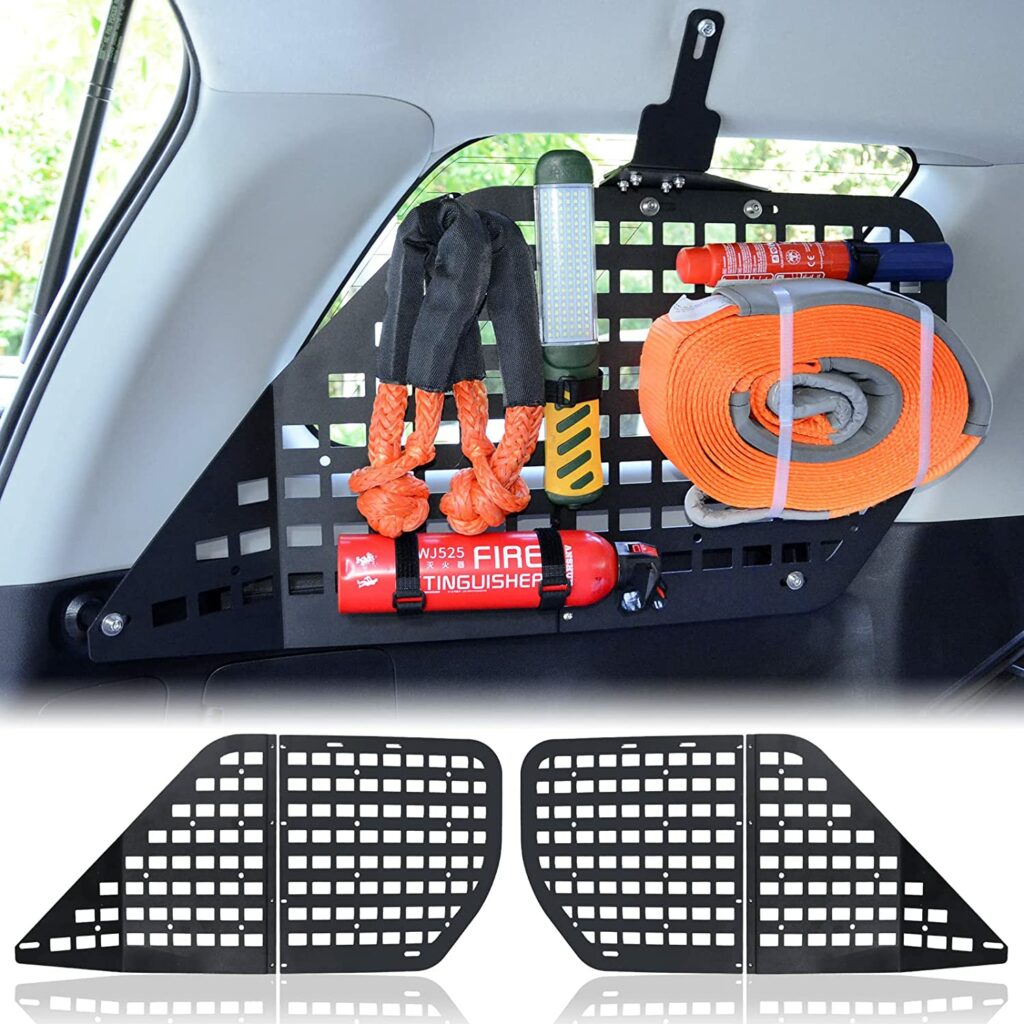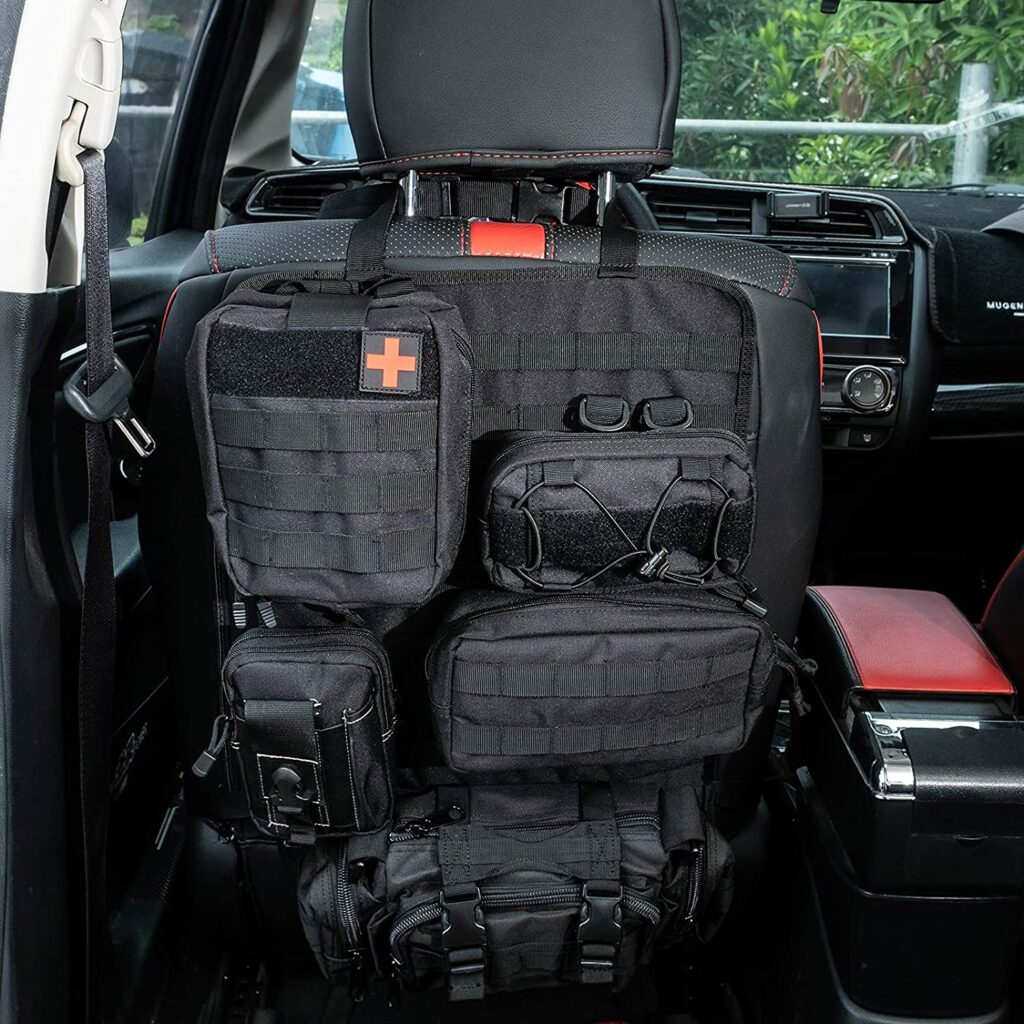Picture this – you get to camp, it’s dark, and you’re hungry. You get all set up and are ready to cook that delicious chili I mentioned here. The last thing you need is your little green propane tank for the grill, but it is nowhere to be found… Your stomach is starting to rumble and your searching is becoming more frantic as you look under the driver’s seat for the 3rd time. Trust me, there is an easy way to avoid this dreaded scenario.
There are many ways to organize your Overlanding gear, a simple way is labeled bins. They are inexpensive and stack well. Labeled bins allow you to pack faster, and help when you are at camp. On top of having your bins labeled, have dedicated shelving at home, where all your gear lives.
While bins are the base level of the organization pyramid, let’s go over everything from house storage to your vehicle being loaded up.
At Home Storage Solutions
At-home storage is definitely not a one size fits all topic. Some of us live in basement suites, others live in tree houses, and others live in 45,000 sqft mansions. Whether we are in a bungalow or a penthouse, we should all be able to agree that bins and shelving are key to staying organized at home.
Using shelving not only saves on floor space, it often saves you from having to remove 3 bins just to get to the one on the bottom.
You are also able to label each shelf so that every bin has a home. Having your bins labeled AND your shelves labeled means that it doesn’t matter who helps you unpack. Everything will be in the correct spot so that when you go to pack your vehicle for your next trip, everything is where it should be.
Shelving can get expensive fairly quickly, but it really doesn’t need to. Both from Walmart and Amazon, you are able to find 4-tier shelving for around $50. Be sure to check the weight limit for each shelf though. You don’t want to hear a loud crash in the middle of the night and find out your shelves have collapsed.
Wall hooks and door hangers are also extremely useful. They allow you to hang things that may not stack so well, or are perhaps too large for your shelves. Such as a backpack, or traction boards. All I ask is, if you use wall hooks, please be sure they are securely in a stud (insert dad joke here).
Best Type of Bins For Storage
There are a few different styles of bins available for storage, each with its own pros and cons. Let’s go over them.
Tote Bin
The tote bin is the tried and true storage bin. They are fairly inexpensive and come in a variety of different sizes. From deep and wide, to short and stubby, and long and shallow. They provide you with plenty of options for packing your Overlanding and camping gear.
Tote bins also typically have a sunken lid. This is both a positive and a negative. Because the lid is lower than the top brim of the bin, it slightly limits the amount of space inside. However, on the plus side, they are easily stackable and you don’t need to worry about them sliding off of each other.
Pros:
- inexpensive
- come in plenty of shapes and sizes
- fairly sturdy
- easily stackable
Cons:
- not waterproof
- do not lock
- cannot stand on (it’s a weird one, but being able to throw a bin down to aid in reaching something can be an awesome bonus)
Pelican/Hard Shell Case
When you say Pelican Case, most people know what you are talking about. Whether or not you are even talking about the actual brand. Hardshell, waterproof, and probably close to bomb-proof cases (please don’t try to blow up your case).
While Pelican has dominated the hardshell case market for a long time, thanks to sites like Amazon, other quality hardshell cases have come to market, and are readily available. Much like the classic tote bin, Pelican-style cases come in a pretty good variety of shapes and sizes. Though, their price point tends to be much higher than a regular tote.
Pros:
- hardshell
- typically waterproof
- different shapes and sizes
- many are lockable
- Pelican brand cases can be secured permanently to a roof rack
- you can stand on them
Cons:
- higher price point
- not easily stacked without rachet straps securing them
Foldable Bins
Folding bins are a unique storage solution that you don’t see all that often. Personally, I have one, and I love it. This style bin is not one that lives its life full of gear at all times. It typically hangs out on a shelf until it is needed.
I use my folding bin to pack my clothing and toiletries. Yes, you certainly could use a backpack for this, and I used to. Now I find that having a bin for my clothing allows me to quickly find what I am looking for, rather than rummaging through a backpack.
You are also able to place other items on top of it. You could use a tote bin for this, but because it isn’t always full, that would be a waste of space when stored at home. Also, you don’t really need a lid on your bin if it is in your vehicle and only holding clothing, toiletries, snacks, etc.
Pros:
- take up minimal space when stored at home
- relatively inexpensive
- great for packing clothing or other personal items
- can place lighter weigh items on top of them
Cons:
- not very sturdy – definitely don’t stand on a folding bin
- no lid
Vehicle Storage Solutions
Vehicle storage is a wonderful topic that gets the OCD in me excited. Having a well-organized vehicle is something that I think most Overlanders strive for and are proud to show off. Trucks, SUVs, Vans, and even Cars, all have varying capabilities when it comes to customized storage solutions. Heck, I just saw a video of a built Smart Car that was more organized than most off-road rigs I’ve seen.
There are obvious storage ideas such as bins, and less obvious ones like inner tailgate storage. Keep in mind, that many vehicles have extra storage compartments that don’t always get utilized. For example, my Tacoma has storage under the rear seats, as well as behind the rear seats.
Bins
The pros and cons of different types of bins are fairly well covered above, but I will just briefly touch on how to actually use your bins.
Depending if you use your vehicle as a daily driver or not, you may have bins that call your vehicle their permanent home.
As I mentioned, my truck has storage built in under the seats, in those spots I have my recovery tow rope, shackles, and a jack. If your vehicle doesn’t have the luxury of having that type of storage, you could easily pack a recovery rope and shackles into a smaller-sized tote bin.
This bin could then be placed in your trunk, or even behind one of your front seats if you don’t regularly have passengers in the back. Keep in mind, that this bin should be easily accessible! If you own an SUV with a swing-out door, depending on how you’re stuck you might not be able to access your trunk area.
Cooking supplies. Bins love housing cooking supplies! There are certain cooking items that can more or less make or break a camping trip if you forget them. For example, have you ever tried to flip a fried egg without a spatula? It’s rough. Paper towel or napkins. These won’t make or break a trip, but they sure make life more pleasant.
Another tip is to have a couple of small Tupperware containers for your cutlery. I have one marked “clean,” and one marked “dirty.” I usually just do the ol’ paper towel wipe of my cutlery while I’m out camping, this saves on water and means I don’t have to deal with the disposal of dirty food water.
A few things that can live in your Cooking Supplies tote full-time are:
- paper towel
- spare ziplock bags for leftovers
- tinfoil
- cutlery
- spatula
- cooking spray
- plates
- bowls
- cups
- pan
- pots
- salt and pepper/other seasonings
- oven mitt in case you cook over the fire
- emergency food
- small green propane tanks
This is not an exhaustive list, but hopefully, it’ll give you a good idea of how a bin could be packed.
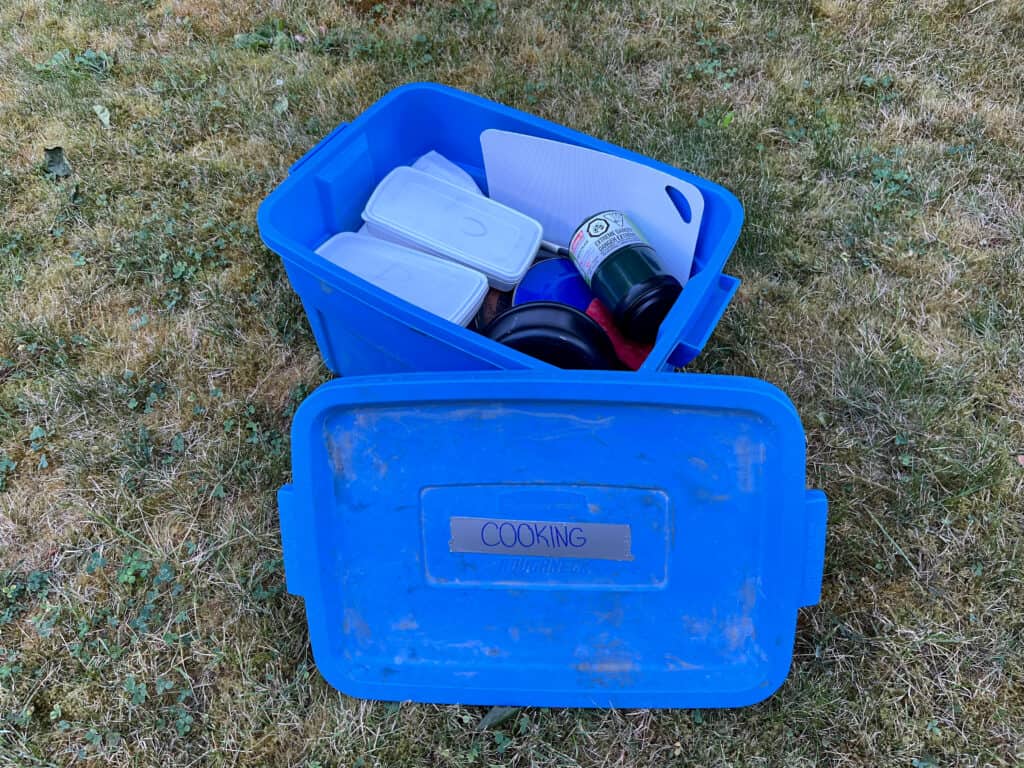
Truck Bed Storage
Unless you own a Honda Ridgeline – my thoughts and prayers go out to you if you do – you probably don’t have storage built into your bed. I will admit, that is one thing Honda really nailed. You are left with building or purchasing your own storage system for in the bed of your truck.
Before you go crazy and fill the bed of your truck with a foot-high deck, consider what you want to store first. You might only need a storage system on one half of your bed. Also, consider whether you want sliding drawers, a storage system that flips open, or maybe a combo of both.
Maybe this style of bed storage isn’t needed either, a simple “gullwing cross bed box” may be all you need. In the intro to this section, I mentioned tailgate storage. While this is not a common form of storage, it is certainly an option if you know how to fabricate or have a few extra green bills to spend.
Rear Window Storage
Much like tailgate storage, rear window storage, aka molle panel, is not one you see very often, but I love the idea of.
Molle panels are more of an SUV storage device than a truck. They typically mount in front of the side rear window in the trunk. You can then securely mount items to it that you want easily accessible. Two of the most common things mounted to the Molle rack are, a First Aid Kit, and a Fire Extinguisher. These are two things that can remain in your vehicle at all times, and you want to be able to access them quickly and easily.
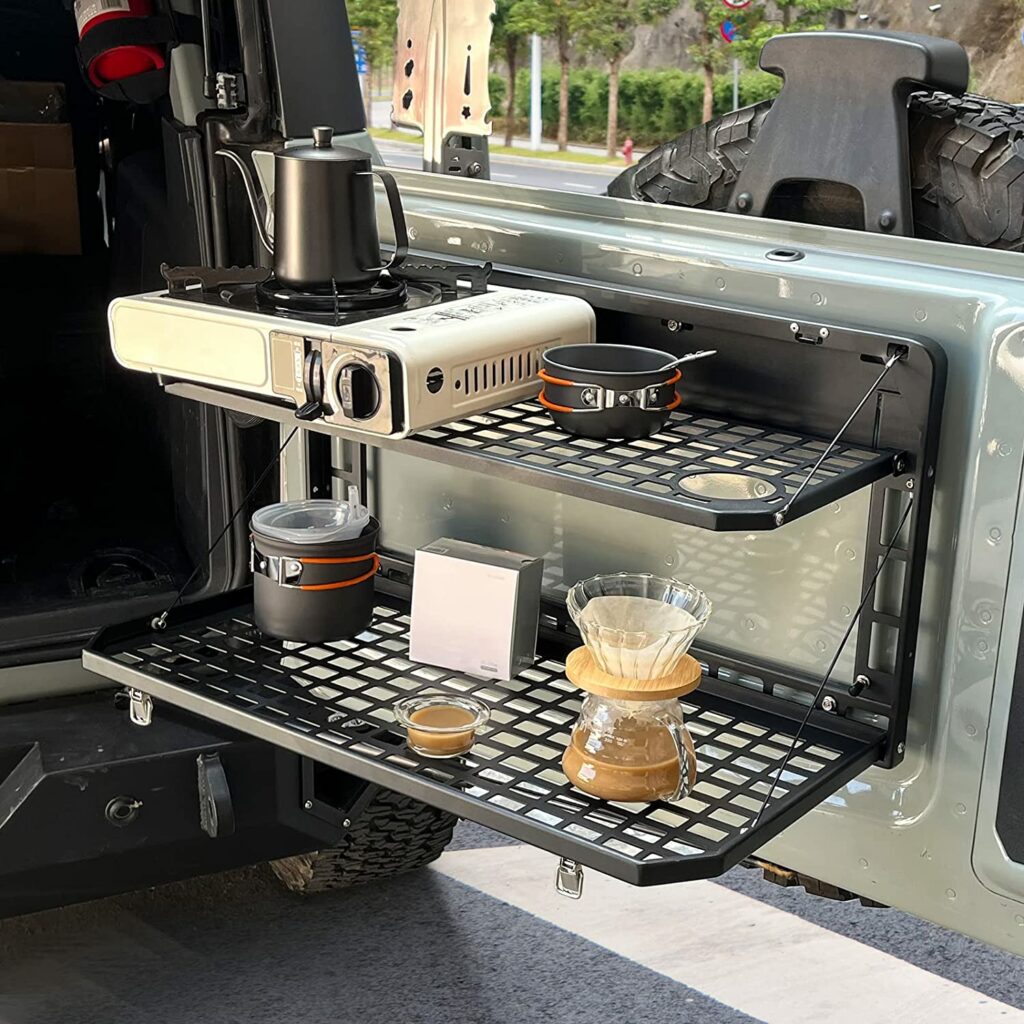
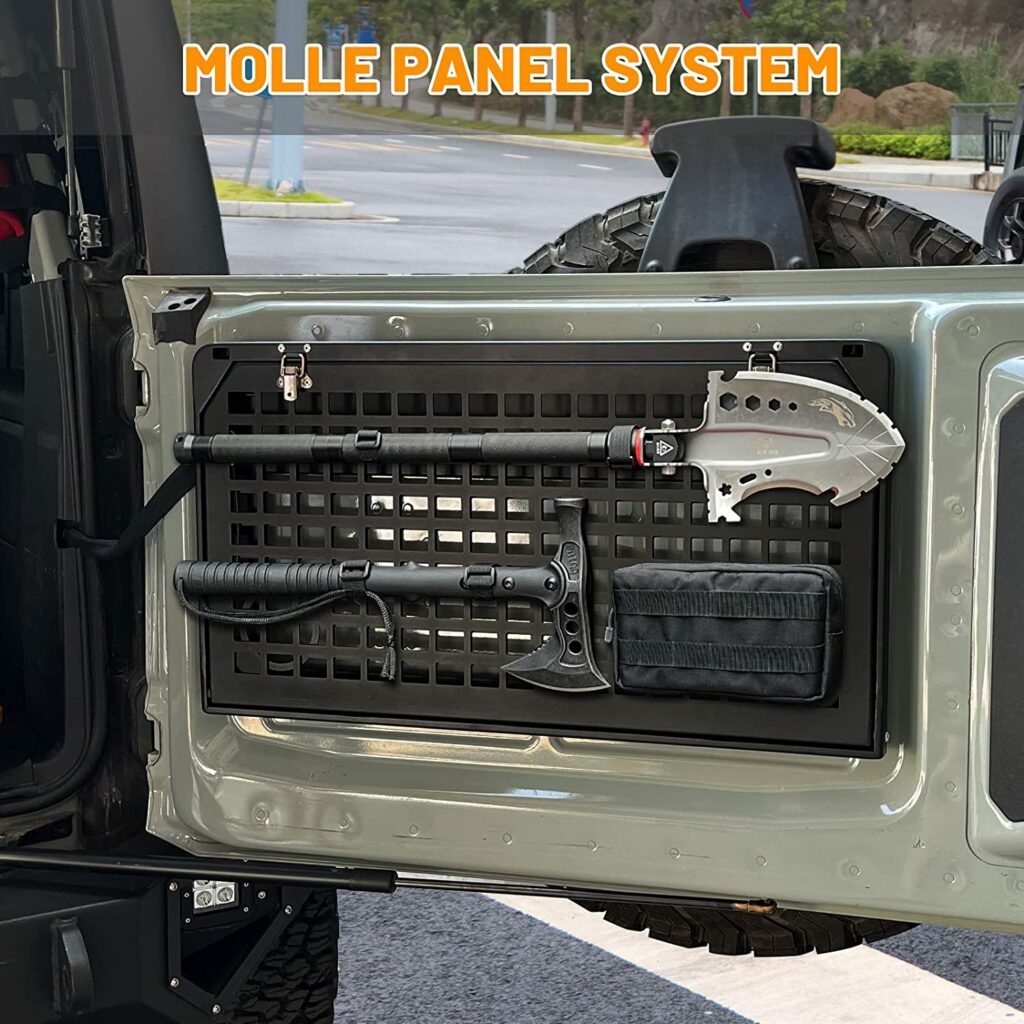
Driver and Passenger Seat Storage
Removable seat storage is a fantastic option. Often referred to as, “seat back organizers.” They hang off the back, or front of your seat depending on if you have a passenger with you or not.
There are a number of different styles as well. Some have pockets and pouches built in, and some are designed with specific storage solutions to meet your needs, that are purchased individually. Seat storage organizers are great for storing your paper maps, first aid, walkie-talkies, or VHF Radio.
Seat back storage is also something that you could have hanging in your garage, packed and ready to go if you don’t want to leave it in your vehicle full time.
SUV Drawer System
I love SUVs, but in my eyes, a major downfall is the lack of storage in the trunk. If you have a vehicle that is built for off-roading but is also your daily driver, you don’t want to be leaving a bunch of bins in the trunk full time.
Much like the truck bed storage system, you can easily build a drawer system for the back of your SUV. This allows you to leave some gear safely stored in your trunk, while still being able to fit your groceries in the back and 4 screaming kids up front. If you get crafty with your drawer build, you can also build a slide-out bed! One that slides out forward when the back seats are folded down.
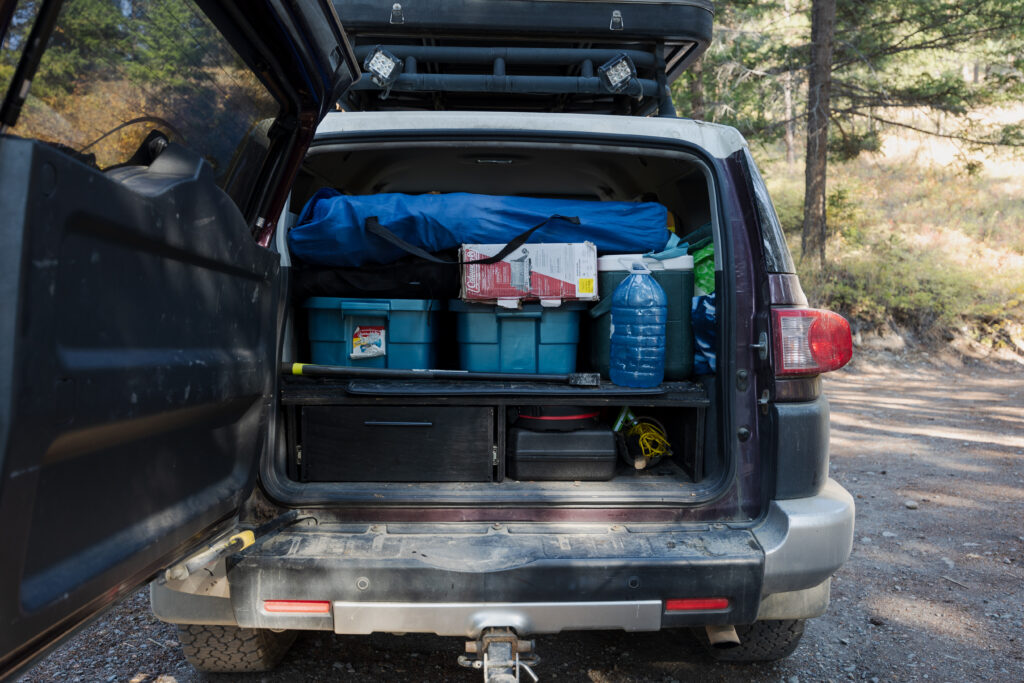
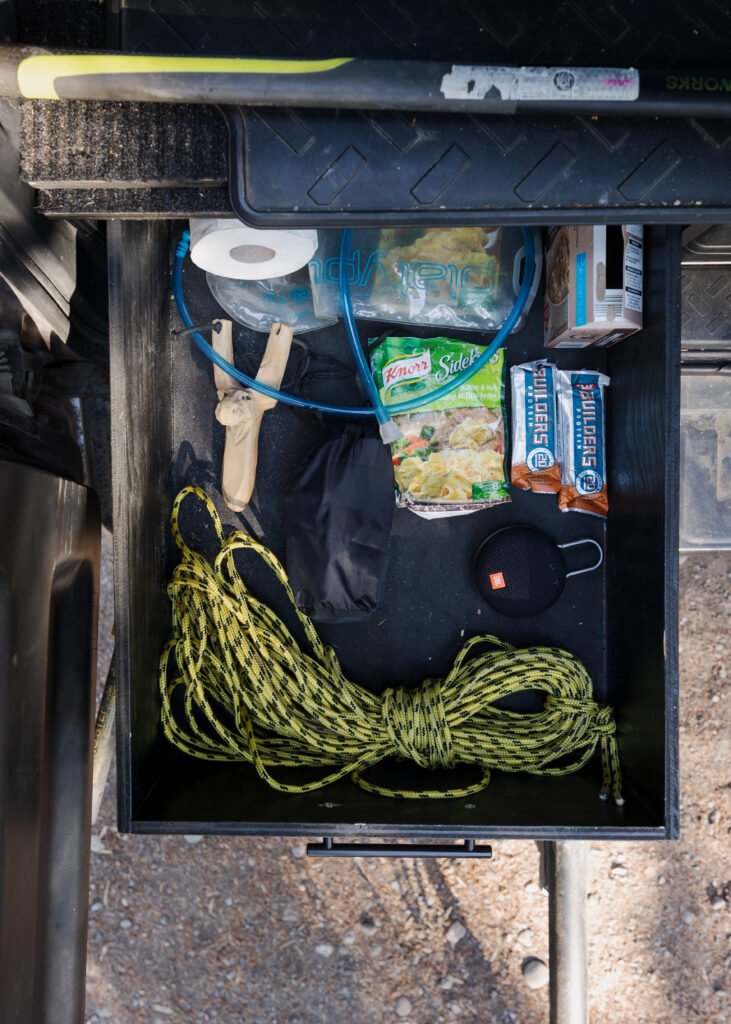
When it comes to storing all your gear, whether it be at home or in your vehicle, have fun with it! Experiment with different methods and systems, and find what works best for you.
